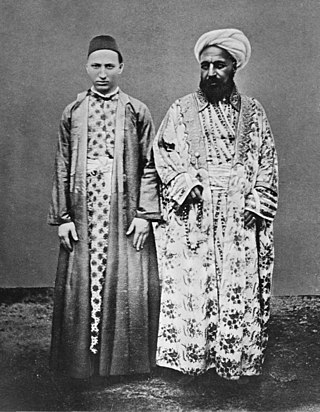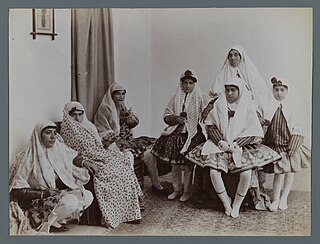
Slavery is the ownership of a person as property, especially in regards to their labour. Slavery typically involves compulsory work, with the slave's location of work and residence dictated by the party that holds them in bondage. Enslavement is the placement of a person into slavery, and the person is called a slave or an enslaved person.

Slavery in medieval Europe was widespread. Europe and North Africa were part of a highly interconnected trade network across the Mediterranean Sea, and this included slave trading. During the medieval period (500–1500), wartime captives were commonly forced into slavery. As European kingdoms transitioned to feudal societies, a different legal category of unfree persons—serfdom—began to replace slavery as the main economic and agricultural engine. Throughout medieval Europe, the perspectives and societal roles of enslaved peoples differed greatly, from some being restricted to agricultural labor to others being positioned as trusted political advisors.

Historically, slavery has been regulated, supported, or opposed on religious grounds.

Islamic views on slavery represent a complex and multifaceted body of Islamic thought, with various Islamic groups or thinkers espousing views on the matter which have been radically different throughout history. The Quran and the hadith are the sources used for Sharia ,where the legislation concerning slaves is derived from.

White slavery refers to the enslavement of any of the world's European ethnic groups throughout human history, whether perpetrated by non-Europeans or by other Europeans. Slavery in ancient Rome was frequently dependent on a person's socio-economic status and national affiliation, and thus included European slaves. It was also common for European people to be enslaved and traded in the Muslim world; European women, in particular, were highly sought-after to be concubines in the harems of many Muslim rulers. Examples of such slavery conducted in Islamic empires include the Arab slave trade, the Barbary slave trade, and the Black Sea slave trade, among others. It was common for Europeans to be traded alongside Africans, Turks, Iranians, and sometimes other Arabs.

The abolition of slavery occurred at different times in different countries. It frequently occurred sequentially in more than one stage – for example, as abolition of the trade in slaves in a specific country, and then as abolition of slavery throughout empires. Each step was usually the result of a separate law or action. This timeline shows abolition laws or actions listed chronologically. It also covers the abolition of serfdom.

The Early History of slavery in the Indian subcontinent is contested because it depends on the translations of terms such as dasa and dasyu. Greek writer Megasthenes, in his 4th century BCE work Indika, states that slavery was banned within the Maurya Empire, while the multilingual, mid 3rd Century BCE, Edicts of Ashoka independently identify obligations to slaves and hired workers, within the same Empire.

Slavery in the Ottoman Empire was a major institution and a significant part of the Ottoman Empire's economy and traditional society. The main sources of slaves were wars and politically organized enslavement expeditions in the Caucasus, Eastern Europe, Southern Europe, Central Europe, Southeast Europe, the Western Mediterranean and Africa. It has been reported that the selling price of slaves decreased after large military operations. In Constantinople, the administrative and political center of the Ottoman Empire, about a fifth of the 16th- and 17th-century population consisted of slaves. Statistics of these centuries suggest that Istanbul's additional slave imports from the Black Sea slave trade have totaled around 2.5 million from 1453 to 1700.
In the Arab world, racism targets non-Arabs and the expat majority of the Arab states of the Persian Gulf coming from South Asian groups as well as Black, European, and Asian groups that are Muslim; non-Arab ethnic minorities such as Armenians, Africans, the Saqaliba, Southeast Asians, Jews, Kurds, and Coptic Christians, Assyrians, Persians, Turks, and other Turkic peoples, and South Asians living in Arab countries of the Middle East.

The history of slavery in the Muslim world began with institutions inherited from pre-Islamic Arabia.

Concubinage in the Muslim world was the practice of Muslim men entering into intimate relationships without marriage, with enslaved women, though in rare, exceptional cases, sometimes with free women. If the concubine gave birth to a child, she attained a higher status known as umm al-walad.

In classical Islamic law, a concubine was an unmarried slave-woman with whom her master engaged in sexual relations with her consent. Concubinage was widely accepted by Muslim scholars in pre-modern times. Most modern Muslims, both scholars and laypersons, believe that Islam no longer permits concubinage and that sexual relations are religiously permissible only within marriage.

The trans-Saharan slave trade, part of the Arab slave trade, was a slave trade in which slaves were mainly transported across the Sahara. Most were moved from sub-Saharan Africa to North Africa to be sold to Mediterranean and Middle Eastern civilizations; a small percentage went the other direction.

The Indian Ocean slave trade, sometimes known as the East African slave trade, was multi-directional slave trade and has changed over time. Captured in raids primarily south of the Sahara, predominately black Africans were traded as slaves to the Middle East, Indian Ocean islands, Indian subcontinent, and Java. Beginning in the 16th century, they were traded to the Americas, including Caribbean colonies.

Slavery existed in Morocco since antiquity until the 20th-century. Morocco was a center of the Trans-Saharan slave trade route of enslaved Black Africans from sub-Saharan Africa until the 20th-century, as well as a center of the Barbary slave trade of Europeans captured by the Barbary pirates until the 19th-century. The open slave trade was finally suppressed in Morocco in the 1920s. The haratin and the gnawa have been referred to as descendants of former slaves.
Attitudes of medieval Arabs to Black people varied over time and individual attitude, but tended to be negative. Though the Qur'an expresses no racial prejudice, ethnocentric prejudice towards black people is widely evident among medieval Arabs, for a variety of reasons: the declining power of the Aksumite Empire; Arabs' extensive conquests and slave trade; the influence of Aristotelian ideas regarding slavery, which some Muslim philosophers directed towards Zanj; and the influence of Judeo-Christian ideas regarding divisions among humankind. On the other hand, the Afro-Arab author Al-Jahiz, himself having a Zanj grandfather, wrote a book entitled Superiority of the Blacks to the Whites, and explained why the Zanj were black in terms of environmental determinism in the "On the Zanj" chapter of The Essays.

Chattel slavery was a major part of society, culture and economy in the Abbasid Caliphate (750–1258), which during its history included most of the Middle East. While slavery was an important part also of the preceding practice of the Umayyad Caliphate (661–750), it was during the Abbasid Caliphate that the slave trade to the Muslim world reached a more permanent commercial industrial scale, establishing commercial slave trade routes that were to remain for centuries.

Slavery in the Umayyad Caliphate refers to the chattel slavery taking place in the Umayyad Caliphate (661–750), which comprised the majority of the Middle East with a center in the capital of Damascus in Syria.

Slavery in the Rashidun Caliphate refers to the chattel slavery taking place in the Rashidun Caliphate (632–661), a period when the Islamic Caliphate was established and the Islamic conquest expanded outside of the Arabian Peninsula.
The Anglo-Ottoman Convention of 1880 also known as Anglo-Ottoman Convention for the suppression of the African traffic and Anglo–Ottoman Convention for the Suppression of the Slave Trade, was a treaty between the United Kingdom of Great Britain and Ireland and the Ottoman Empire from 1880. The Convention addressed the slave trade of the Ottoman Empire, specifically the Red Sea slave trade of Africans across the Red Sea toward the Ottoman province of Hejaz.






